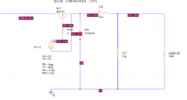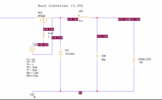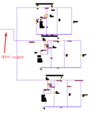Hello,
i would like to design a SEPIC converter with input voltage ranging from 3 Volts to 19 Volts . On its output will be connected three DC-DC converters ( 1 boost and 2 buck converters , their image is attached) and the output voltage of the SEPIC should be around 8.4V. Could you help me with the design ?
Thank you.
i would like to design a SEPIC converter with input voltage ranging from 3 Volts to 19 Volts . On its output will be connected three DC-DC converters ( 1 boost and 2 buck converters , their image is attached) and the output voltage of the SEPIC should be around 8.4V. Could you help me with the design ?
Thank you.





